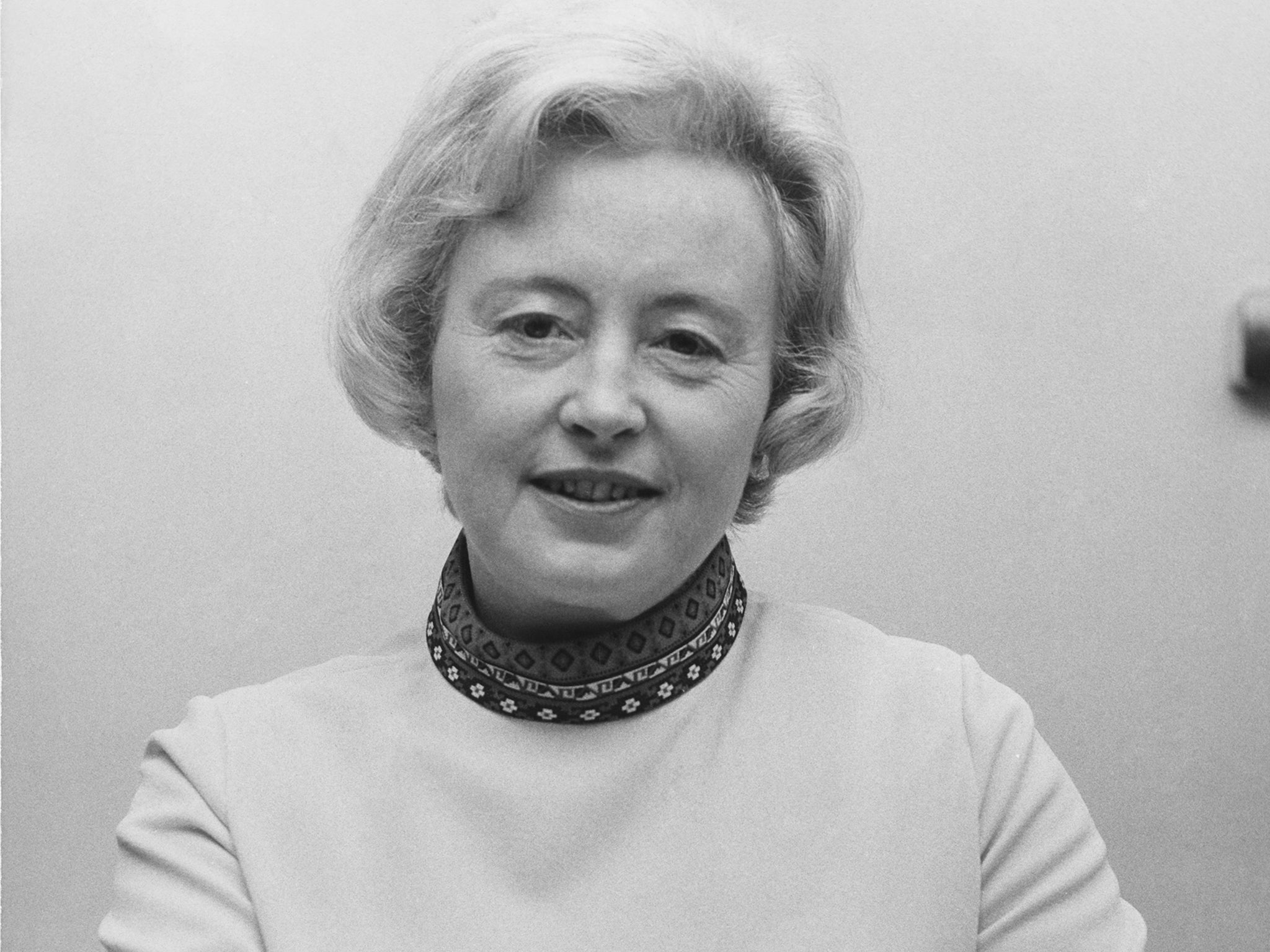Margaret Burbidge: Pioneering astrophysicist who showed we are all made of stardust
She explored the far reaches of the universe, her work shedding light on the origin of chemical elements

Margaret Burbidge, who has died aged 100, was a self-described “watcher of the skies” whose research shed light on distant galaxies, mysterious quasars and the origins of chemical elements, helping to explain how humans and everything else are made of stardust.
While sailing from England to France one night at the age of four, Burbidge looked skyward and saw, as if for the first time, a luminous patchwork of stars and planets. She went on to read books by astronomer James Jeans, a distant relative, and never looked back, devoting her life to a career in astronomy and astrophysics that revealed some of the furthest objects in the universe and upended a field long dominated by men.
At a time when many women were expected to stay at home and cook, Burbidge wrote a kind of celestial cookbook, working with three co-authors to demonstrate how chemical elements such as carbon and oxygen are formed inside stars, where thermonuclear reactions produce heavier elements from lighter ones.
Considered one of the most influential papers in astrophysics, the 1957 article formed the basis of a widely accepted theory for the origin of chemical elements, with a striking implication. As her collaborator William Fowler put it: “All of us are truly and literally a little bit of stardust.”
Her work was all the more remarkable given that her research depended on the use of observatories that barred their doors to Burbidge in the 1940s, when she sought to leave her native England for larger telescopes in the United States.
Applying for a fellowship at the Mount Wilson Observatory near Los Angeles, Burbidge was rejected because she was a woman. The observatory later denied her request to use its telescope on the grounds that there was no women’s bathroom; undaunted, she used the telescope anyway after posing as an assistant to her husband, physicist Geoffrey Burbidge, who had turned toward astronomy while working as an assistant to his wife.
Burbidge and her husband formed one of the most formidable husband-and-wife duos in modern science, writing numerous papers that combined Geoffrey’s focus on astronomical theory with Margaret’s observational skill. While he was large-framed and argumentative, chomping on cigars and criticising the Big Bang Theory with anyone who would listen, she was diminutive and soft-spoken, reluctant to enter into public debates on the origin of the universe.
Nonetheless she shocked peers when in 1971 she rejected the Annie Jump Cannon Award, an American Astronomical Society prize awarded to outstanding female researchers. Her action spurred the creation of a working group on the status of women in astronomy, and came one year before she was named the first female director of the Royal Greenwich Observatory in London.
The position had traditionally come with the honorary title of astronomer royal. But for the first time, the distinction went to someone else, one of Burbidge’s male peers. Burbidge resigned less than two years later, then became the first female president of the American Astronomical Society in 1976.
Delighting in complex mathematical calculations as well as the intricacies of optical astronomy, Burbidge studied the distance of stars, the rotations of far-off galaxies and the nature of quasars, or quasi-stellar objects, which electrified astronomers in the 1960s with their extreme brightness and radio-wave emissions. She went on to develop instruments used on the Hubble Space Telescope and was awarded the National Medal of Science by president Ronald Reagan in 1985.
She was perhaps best known for her early work on the origin of elements, which culminated in the article “Synthesis of the Elements in Stars”. Published in the Reviews of Modern Physics, it became known as B2FH after the initials of its authors: the Burbidges, Fowler (who later received a share of the Nobel Prize in Physics) and Fred Hoyle, who coined the term “big bang” but, like Geoffrey, favoured an alternative theory known as the steady-state model of the universe.
At times Burbidge was also identified with the steady-state view, in which matter is continually being created, with the universe’s density more or less unchanged. (By contrast, the Big Bang Theory holds that the universe was created in a single, spectacular explosion, and has been expanding and growing less dense ever since.)
The Burbidges cited some of their quasar research in support of the steady-state model, which has fallen out of favour since the 1960s. But while some of Burbidge’s theories were disputed, her quasar observations contributed to major advances in the field, including the understanding that every galaxy has a huge black hole in its centre.
Eleanor Margaret Peachey was born in Davenport, Greater Manchester, in 1919. Her father was a chemist who taught at the Manchester School of Technology, and her mother was one of two female students in his class.
She studied astronomy at University College London, where she received a bachelor’s degree in 1939 and a doctorate in 1943 while conducting spectroscopy experiments at the Mill Hill observatory, as German bombs fell nearby. In 1948 she married Geoffrey Burbidge, whom she met at a university lecture.
Together they moved to the US, where Burbidge performed research at the Yerkes Observatory in Wisconsin, McDonald Observatory in Texas, Harvard College Observatory in Massachusetts and California Institute of Technology before joining the University of California San Diego faculty with her husband in 1962. They continued collaborating until his death in 2010.
Burbidge is survived by a daughter, Sarah.
Margaret Burbidge, astronomer and astrophysicist, born 12 August 1919, died 5 April 2020
© Washington Post
Subscribe to Independent Premium to bookmark this article
Want to bookmark your favourite articles and stories to read or reference later? Start your Independent Premium subscription today.

Join our commenting forum
Join thought-provoking conversations, follow other Independent readers and see their replies